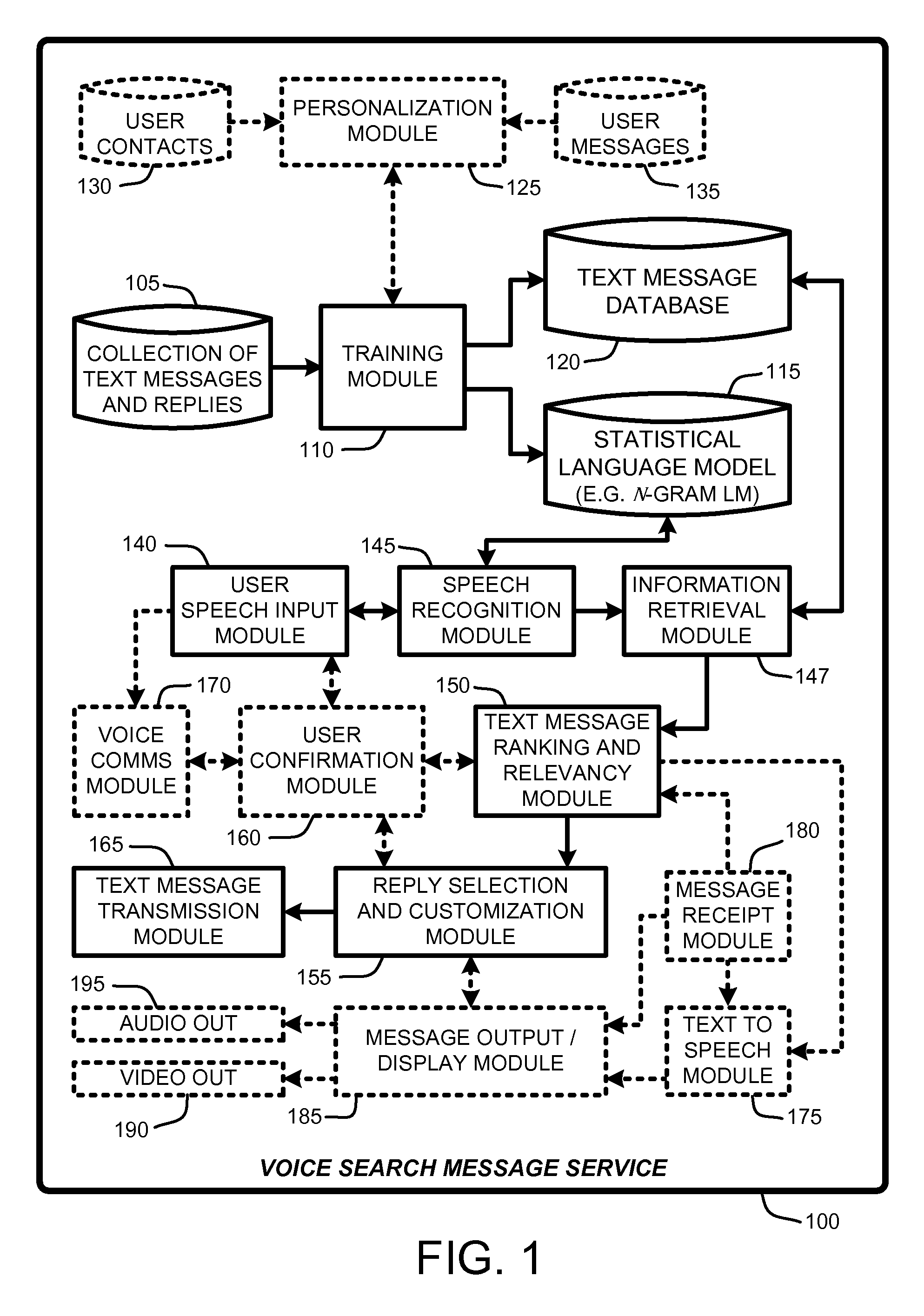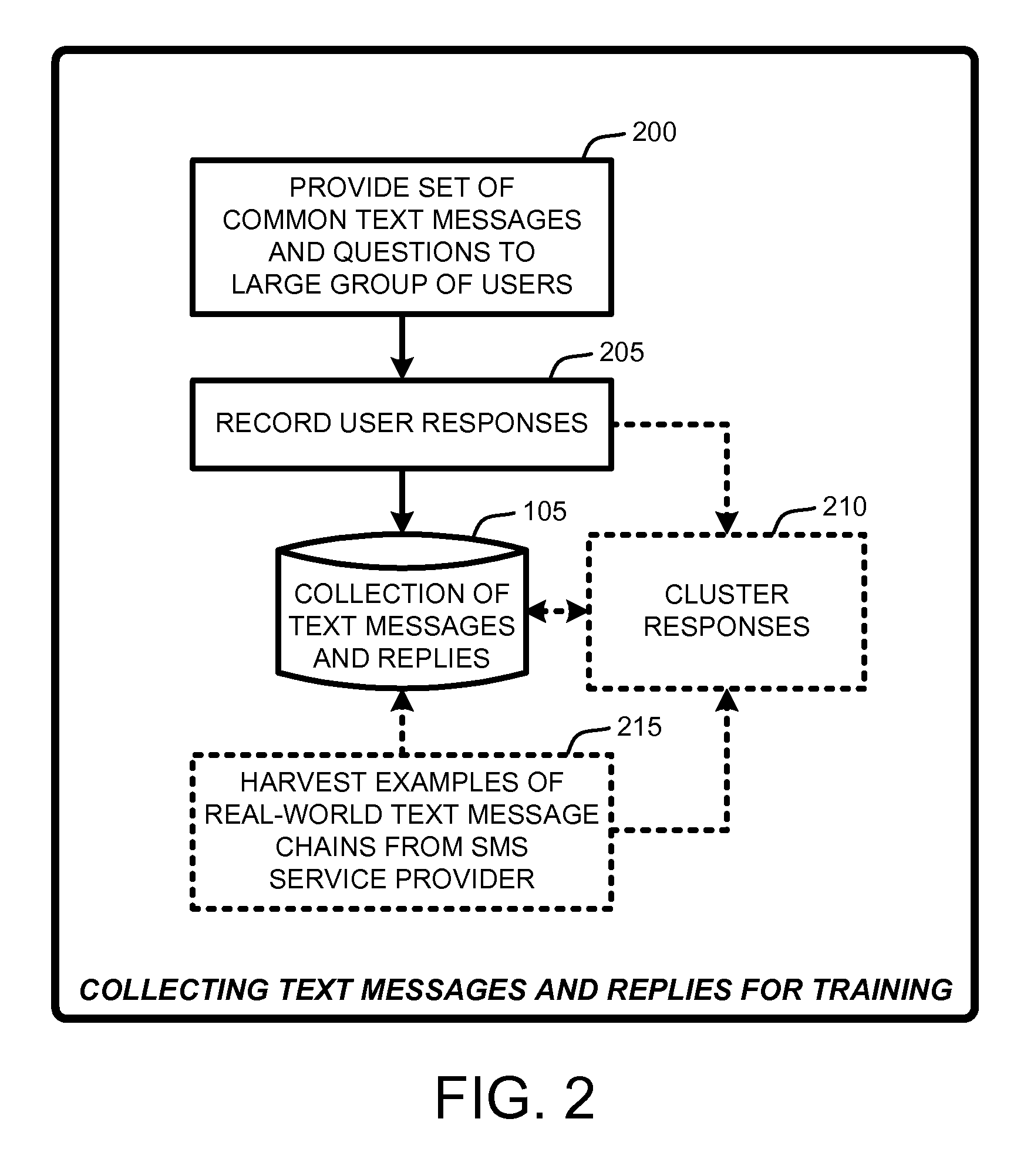Replying to text messages via automated voice search techniques
a text message and automated technology, applied in the field of text message response techniques, can solve the problems of increasing speech recognition accuracy, system returning incorrect information from the database, and limited speech enabled applications, so as to reduce computational overhead and potential distractions to user attention, the effect of limiting user distractions and reducing computational overhead
- Summary
- Abstract
- Description
- Claims
- Application Information
AI Technical Summary
Benefits of technology
Problems solved by technology
Method used
Image
Examples
Embodiment Construction
[0025]In the following description of the embodiments of the claimed subject matter, reference is made to the accompanying drawings, which form a part hereof, and in which is shown by way of illustration specific embodiments in which the claimed subject matter may be practiced. It should be understood that other embodiments may be utilized and structural changes may be made without departing from the scope of the presently claimed subject matter.
1.0 Introduction
[0026]In general, a “Voice Search Message Service,” as described herein, provides various techniques for generating text messages from a user speech input. In particular, the Voice Search Message Service provides a voice-search based information retrieval process that evaluates the user speech input and selects one or more probabilistic matches from a set or database of pre-defined or user-defined text messages. These text messages are intended to generally paraphrase the user speech input rather than exactly dictate the spee...
PUM
 Login to View More
Login to View More Abstract
Description
Claims
Application Information
 Login to View More
Login to View More - R&D
- Intellectual Property
- Life Sciences
- Materials
- Tech Scout
- Unparalleled Data Quality
- Higher Quality Content
- 60% Fewer Hallucinations
Browse by: Latest US Patents, China's latest patents, Technical Efficacy Thesaurus, Application Domain, Technology Topic, Popular Technical Reports.
© 2025 PatSnap. All rights reserved.Legal|Privacy policy|Modern Slavery Act Transparency Statement|Sitemap|About US| Contact US: help@patsnap.com



